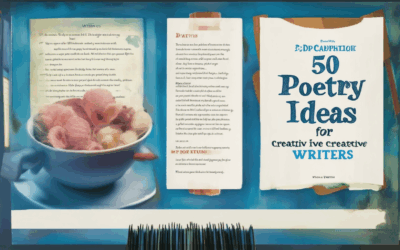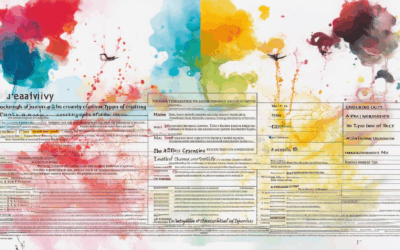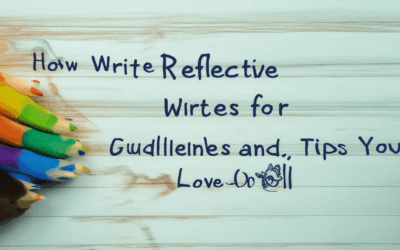Are you eager to embark on your poetic journey but unsure where to begin? Whether you’re a student looking to explore poetry or someone seeking to dive deeper into this captivating art form, finding the right resources can make all the difference. With countless poetry resources available, it can be overwhelming to know which ones are worth your time. From free poetry resources to structured guides, there’s something for everyone. In this comprehensive guide, we’ll walk you through the best poetry resources for beginners, helping you unlock your creative potential and discover the joy of poetry.
Key Takeaways
- Start with the basics of poetry to build foundational skills for beginners.
- Understand structure, rhyme, and rhythm to create engaging verse.
- Explore themes like love, nature, and personal experiences to spark emotion.
- Use vivid imagery and symbolism to bring scenes to life.
- Craft poetry with a clear tone and mood to evoke specific feelings.
- Avoid clichés and focus on simplicity for clarity and impact.
- Develop an authentic voice by respecting poetic form and avoiding imitation.
- Discover resources like Silken Drum to support your poetry journey.

How to Start Poetry as a Beginner
Starting poetry as a beginner can be an exciting journey filled with creativity and self-discovery. Here are some steps to help you get started:
- Start with Reading Poetry: Begin by exploring the works of established poets. Reading widely will expose you to different styles, themes, and techniques that can inspire your own writing.
- Experiment with Forms: Try different poetic forms such as sonnets, haiku, free verse, or tanka. Each form has its own structure and rules, allowing you to find what suits your style best.
- Develop a Daily Practice: Set aside time each day to write poetry. Even short sessions can help build momentum and consistency. Write about whatever comes to mind, whether it’s a moment, emotion, or idea.
- Learn the Basics of Poetry Techniques: Familiarize yourself with concepts like rhyme schemes, meter, imagery, and symbolism. These tools can help you craft more meaningful and impactful lines.
- Join a Poetry Group or Workshop: Participating in groups or workshops can provide valuable feedback, encouragement, and guidance. It also introduces you to fellow poets who can share their experiences and advice.
- Explore Personal Themes: Write about topics or themes that resonate with you personally. Whether it’s love, nature, or social issues, let your unique perspective shine through your words.
- Revise and Refine: Don’t be afraid to revisit and revise your work. Poetry often requires multiple drafts to reach its full potential. Consider sharing your pieces with friends or mentors for constructive criticism.
- Submit Your Poetry: Once you feel confident with your work, consider submitting your poetry to literary journals, competitions, or online platforms. This can be a great way to gain exposure and feedback.
- Stay Inspired: Keep a journal of things that inspire you – quotes, songs, conversations, or moments in life. Review it periodically to spark ideas for your poetry.
Remember, poetry is a personal journey. There’s no right or wrong way to approach it. Embrace the process, stay curious, and enjoy the journey of self-expression!
The Six S’s of Poetry
Poetry encompasses a rich tapestry of elements that contribute to its beauty, depth, and emotional resonance. Among the frequently discussed aspects of poetry, six primary elements are often highlighted:
- Silence: The pause between words allows for reflection and enhances the impact of the words that follow.
- Structure: Poetic forms like sonnets and haikus provide a framework that shapes the content and rhythm, making it more accessible and memorable.
- Symbolism: Words and images are used to represent concepts beyond their literal meaning, inviting readers to explore deeper themes and interpretations.
- Sound: The musicality of words and their cadences evoke emotions and create a sensory experience that goes beyond mere reading.
- Spoken Word: Poetry is meant to be heard, and the act of speaking it adds an extra layer of expression through tone and delivery.
- Space: The spaces between words and the negative space within a poem allow for imagination and interpretation, giving readers room to visualize and ponder.

Teaching Yourself Poetry: A Step-by-Step Guide
To embark on teaching yourself poetry, follow these organized steps to foster growth and enjoyment in your journey:
- Start with Reading Poetry
- Begin by exploring classic and modern poets to understand diverse styles.
- Read works by Shakespeare, Whitman, Dickinson, and contemporary poets like Mary Oliver or Rupi Kaur.
- Study the structure, themes, and imagery used in popular poems to gain insight into poetic techniques.
- Allocate specific times daily for writing, such as mornings when your mind is fresher.
- Aim to write a little each day, even if it’s just a few lines or a poem fragment.
- Experiment with different forms like sonnets, haiku, or free verse to broaden your skills.
- Engage with local poetry groups or online communities to share your work and receive feedback.
- Consider enrolling in poetry workshops offered by organizations like The Poetry Society or The Academy of American Poets.
- Participate in poetry readings and open mic events to connect with fellow poets and gain inspiration.
- Explore online platforms like Substack for poetry newsletters and YouTube for tutorial videos.
- Visit libraries to borrow poetry books and gain insights from established poets.
- Use apps or websites offering poetry tools and resources to enhance your learning journey.
- Seek out poetry submission portals such as The Poetry Review or Poetica to showcase your talent.
- Publishing your work can provide validation and encourage continued growth.
- Be open to constructive criticism and use feedback to refine your poetry.
- Keep a portfolio of your poetry to visually track your development over time.
- Review past works to observe improvements and celebrate milestones.
- Stay committed to your journey, understanding that growth takes patience and dedication.
- Approach poetry as a creative outlet rather than a competitive endeavor.
- Embrace experimentation and allow your unique voice to emerge naturally.
- Find joy in the act of writing and let your passion guide your evolution as a poet.

How to Teach Poetry for Beginners
To effectively teach poetry to beginners, it’s essential to approach the subject with patience and a focus on building foundational skills. Here’s a structured guide to help educators and mentors introduce poetry to newcomers:
- Start with the Basics
- Define Poetry Simply: Explain poetry as a form of expression where words are arranged creatively to evoke emotions or tell stories.
- Encourage Reading: Begin by having students read and analyze simple poems, focusing on rhythm, rhyme, and imagery.
- Facilitate Writing Practice: Assign exercises like describing a scene using sensory details or rewriting a familiar story in verse form.
- Introduce Key Techniques
- Rhyme and Meter: Explain common structures like couplets and quatrains, using examples to illustrate how sounds and patterns work in poetry.
- Imagery and Simile: Discuss how using vivid descriptions (e.g., “a leap like a tiger’s roar”) enhances imagery in poetry.
- Alliteration and Assonance: Explore how repeating sounds (alliteration) and vowel sounds (assonance) create musicality in poetry.
- Create a Supportive Environment
- Establish a Safe Space: Encourage students to share their work freely, emphasizing that there are no “right” or “wrong” ways to express themselves.
- Normthesize Mistakes: Highlight that poetry is a creative process and mistakes are part of the learning journey.
- Celebrate Progress: Acknowledge and praise students’ efforts, focusing on growth and personal achievement.
- Provide Resources and Feedback
- Recommend Reading Materials: Suggest accessible poetry books or online platforms that cater to various learning levels, such as Silken Drum .
- Offer Constructive Feedback: Use guidelines like the “POE Method” (Point, Observation, Elaboration) to help students improve their work.
- Implement Peer Review Sessions: Have students read and comment on each other’s poetry to foster collaboration and mutual understanding.
- Make Learning Interactive
- Engage with Activities: Organize poetry walks, where students observe nature and inspire their own verses, or participate in group poetry writing sessions.
- Use Gamification: Incorporate elements like poetry challenges or scavenger hunts to make learning enjoyable and motivating.
- Foster Patience and Persistence
- Emphasize Process Over Product: Highlight that the journey of writing poetry is as valuable as the final piece itself.
- Normalize Imperfection: Remind students that every poem is a step toward growth and self-expression.
- Celebrate Small Wins: Acknowledge and celebrate milestones, such as completing a poem or mastering a specific technique.
What Are the 4 Basics of Poetry?
The foundation of poetry lies in its structure, themes, and stylistic choices. Understanding these basics helps creators craft meaningful and engaging works.
1. Structure and Form
Poetry often follows specific patterns to create rhythm and cadence. Key elements include:
- Meter : The regularity of rhythmic units (e.g., iambic pentameter)
- Rhyme : The repetition of sounds in successive words or lines
- Scheme : A predictable pattern of stressed and unstressed syllables
- Verse : A line or group of lines forming a poem
- Stanza : A group of verses forming a larger unit
2. Themes and Ideas
Poets explore various themes to evoke emotion and provoke thought. Common themes include:
- Love and relationships
- Nature and the environment
- Existential questions
- Personal experiences and memories
3. Imagery and Symbolism
Imagery brings scenes to life, while symbolism represents ideas through objects or actions. Examples include:
- Imagery : “The sun dipped low, casting golden hues across the horizon.”
- Symbolism : The dove symbolizes peace and hope
4. Tone and Mood
Tone reflects the speaker’s attitude, while mood describes the emotional atmosphere. These elements influence how a poem feels:
- Tone : Formal or conversational
- Mood : Happy, sad, mysterious, or serene
5. Rhythm and Flow
Rhythm gives poetry its musical quality. Techniques like alliteration and assonance enhance this:
- Alliteration: “Peter Piper picked a peck of pickled peppers”
- Assonance: “The wind whispers whispered words of wisdom”

What Not to Do When Writing Poetry
Writing poetry is a deeply personal and creative process, but there are certain pitfalls to avoid to ensure your work resonates with readers. Here are six essential guidelines to keep in mind:
- Avoid Clichéd Phrases : Overused expressions can make your poetry feel uninspired. Instead, seek fresh metaphors and unique imagery that reflect your personal vision.
- Don’t Show Off Your Skills : Poetry shouldn’t primarily showcase your technical prowess. Focus on conveying emotion and meaning rather than displaying complexity for its own sake.
- Ignore the Form : While breaking traditional structures can lead to innovation, experiment thoughtfully. Traditional forms often offer frameworks that can enhance your creativity without restricting it.
- Don’t Overemphasize Theme : A strong theme is great, but allow your poem to evolve organically. Forced adherence to a theme can make your work feel contrived.
- Avoid Overcomplicating Language : Complex vocabulary may impress, but clarity is key. Your audience should understand and connect with your emotions without getting lost in obscure words.
- Don’t Imitate Others : While studying great poems is beneficial, imitate wisely. Use them as inspiration but develop your unique voice and style.
Silken Drum encourages every writer to find their authentic voice and explore the depths of their creativity. By avoiding these common mistakes, you can craft poetry that truly moves readers and stands out in the literary world. Explore our platform to discover more resources and communities that can support your journey as a poet. Visit Silken Drum today to connect with fellow writers and share your work.




0 Comments